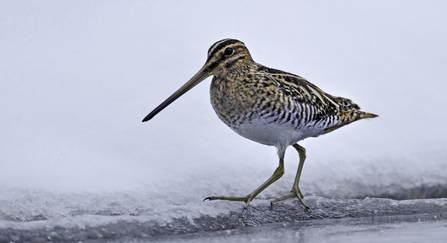Feathered friends!
You may have spent the previous months wondering what unseen bird that was you heard singing. Although bird song turns down a notch or two in winter, it is a perfect time to familiarise yourself with a few calls. Robins sing year-round, and wrens and blackbirds will be heard well into winter. As trees and shrubs lose their leaves, it’s easier to see the bird that is singing.
Winter migrants arrive on our shores, and members of the thrush family, in particular, are one of the highlights of winter. This includes the redwing and fieldfare (listen for its ‘tsak, tsak, tsuk’ call), birds of scrub and farmland, especially with good hedgerows for shelter. Berry-bearing trees and shrubs are magnets for these birds, and they will often forage in late afternoon around the edges of woodlands before moving deeper into the woods to roost.
Because of their importance for winter wildlife, the Trust manages its hedgerows carefully, cutting branches back only every few years in January or February, which allows for greater spring blossoms and more autumn berries and nuts. The Trust also continues to plant and extend its network of hedges, scrub and woodland across its estate each year. Many of the Trust’s Gateshead reserves are great places to see overwintering members of the thrush family, as they have hedges, scrub and grasslands, and woodland edges that provide perfect habitat. This year was a great one for hawthorn blossom and berries, so hopefully the thrushes will be plentiful too.


